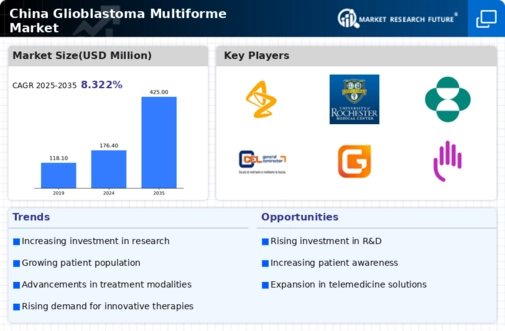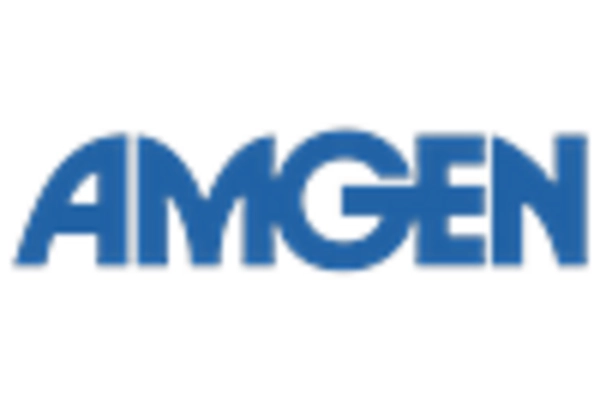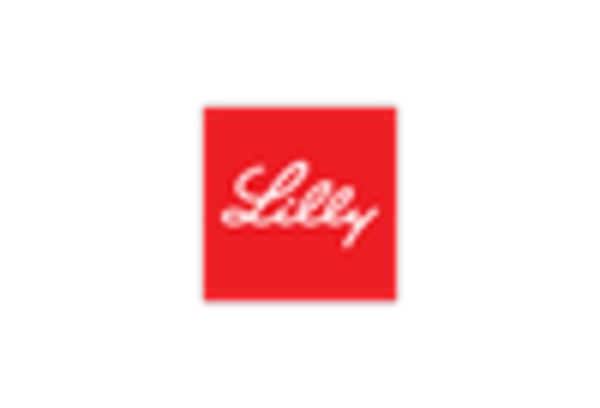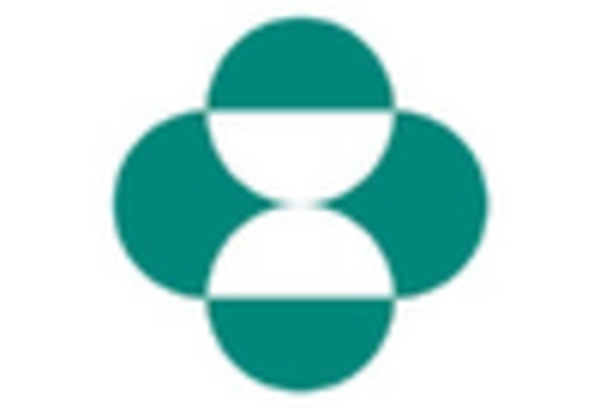Rising Incidence Rates
The glioblastoma multiforme market in China is experiencing growth due to the rising incidence rates of this aggressive brain tumor. Recent statistics indicate that the annual incidence of glioblastoma in China is approximately 2.5 per 100,000 individuals, which translates to thousands of new cases each year. This increasing prevalence is likely to drive demand for innovative treatment options and diagnostic tools within the glioblastoma multiforme market. As healthcare providers and researchers focus on addressing this growing challenge, investments in research and development are expected to rise, potentially leading to the introduction of novel therapies. Furthermore, the aging population in China may contribute to higher incidence rates, as older individuals are more susceptible to developing glioblastoma. This trend underscores the urgent need for effective treatment solutions in the glioblastoma multiforme market.
Increased Awareness and Education
Increased awareness and education regarding glioblastoma multiforme are pivotal drivers of the market in China. Efforts by healthcare organizations and advocacy groups to educate the public about the symptoms and risks associated with glioblastoma are leading to earlier diagnosis and treatment. This heightened awareness is crucial, as timely intervention can significantly impact patient outcomes. Moreover, educational initiatives targeting healthcare professionals are enhancing the understanding of glioblastoma management, thereby improving treatment protocols. As awareness grows, more patients are likely to seek medical attention, which could lead to an increase in the demand for therapies and diagnostic tools within the glioblastoma multiforme market. The potential for improved patient outcomes through education underscores the importance of these initiatives in shaping the future landscape of the market.
Government Initiatives and Funding
Government initiatives aimed at improving cancer care in China are playing a crucial role in shaping the glioblastoma multiforme market. The Chinese government has increased funding for cancer research and treatment programs, with a reported investment of over $1 billion in recent years. These initiatives are designed to enhance access to advanced therapies and improve patient outcomes. Additionally, the establishment of specialized cancer centers and the promotion of public awareness campaigns are likely to facilitate early diagnosis and treatment of glioblastoma. As a result, the glioblastoma multiforme market is expected to benefit from enhanced infrastructure and resources, ultimately leading to better management of this challenging disease. The commitment to cancer care by the government may also encourage private sector investment, further stimulating growth in the glioblastoma multiforme market.
Technological Advancements in Treatment
Technological advancements in treatment modalities are significantly impacting the glioblastoma multiforme market in China. Innovations such as precision medicine, which tailors treatment based on individual genetic profiles, are becoming increasingly prevalent. The introduction of advanced surgical techniques, including minimally invasive procedures, has also improved patient outcomes. Furthermore, the development of novel drug delivery systems, such as nanoparticles, is enhancing the efficacy of existing therapies. According to recent estimates, the market for targeted therapies in China is projected to reach $500 million by 2027, reflecting the growing interest in personalized treatment approaches. These technological advancements not only improve survival rates but also contribute to a more favorable quality of life for patients. As such, the glioblastoma multiforme market is expected to see continued growth driven by these innovations.
Collaboration Between Research Institutions
Collaboration between research institutions and pharmaceutical companies is emerging as a key driver in the glioblastoma multiforme market. In China, partnerships aimed at accelerating research and development of new therapies are becoming more common. These collaborations facilitate the sharing of knowledge, resources, and expertise, which can lead to the discovery of innovative treatment options. For instance, joint ventures between academic institutions and biotech firms are focusing on the development of novel immunotherapies and targeted treatments. This collaborative approach not only enhances the pace of research but also increases the likelihood of successful clinical trials. As a result, the glioblastoma multiforme market is expected to benefit from a more robust pipeline of therapies, ultimately improving treatment options for patients.

















Leave a Comment